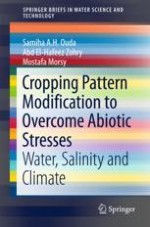This book provides state-of-the art analysis, never done before in Egypt, on agro-climatic zones level. This study deals with how the national cropping pattern can be modified to overcome abiotic stresses, such as water scarcity, induced salinity and climate change to reduce their negative effects on food production. To this end, different cropping patterns are suggested.
This study can be a framework for other developing countries to be used in quantifying and filling the gap in their knowledge about practices that can help in increasing their food security through increasing food production. Furthermore, the study is useful for policy makers to help them in their future plans and policies.
